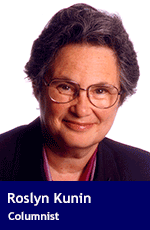 The B.C. referendum on how citizens elect those who govern them is fast approaching.
The B.C. referendum on how citizens elect those who govern them is fast approaching.
The current system has given us viable government for a long time. But like most things in the real world, it’s not perfect.
Those who live in a riding that’s considered safe for a party other than the one they choose can feel unheard and unrepresented.
But there’s no such thing as a truly safe riding. Just ask former British Columbia premier Christy Clark. Even in the United States, where ridings are often heavily gerrymandered, many are looking for considerable upsets in November elections. Gerrymandering is selecting election boundaries to mainly include only those who vote for a particular party. Many American electoral maps look like crazy quilts.
Before I go further, some details and a caveat.
First the details: B.C. citizens will get their referendum ballots in the mail between Oct. 22 and Nov. 2. They must be returned by Nov. 30.
And now the caveat: when I talk about the non-FPP (first past the post) options, I’m talking about proportional representation (PR) in very general terms. At least two of the three options offered in the referendum have never been tried anywhere. Details about how they’ll be implemented haven’t been revealed and in some cases aren’t even determined. Talk about buying a pig in a poke.
If there’s a question about election results, no simple and understandable recount will fix it. Decisions will be made in the bowels of a computer, which we won’t be able to see, understand or trust. Again, exactly how this will work has not yet been decided.
Second, PR doesn’t give minority voters in any riding an elected representative. Their vote goes into a pot for the party they select. If the pot is full enough, the party (not the voters!) selects who sits in the house.
Those chosen aren’t tied to any riding or any specific electorate. They didn’t have to knock on doors, show up at all-candidates meetings or take any measures to make themselves or their ideas known to voters. How much time are they likely to spend listening to and dealing with citizens’ problems?
What such potential members (note that I’m not calling them representatives) have to do is get on a party list in as high a position as possible. To do this, they must gain favour with party leaders, the only ones they’re answerable to.
Instead of government of the people, for the people and by the people, we’ll have a government of party hacks.
One major source of unhappiness with FPP is that it’s winner take all. The candidate with the most votes wins. The others lose.
Under PR, some but not all those in the house would be directly elected in specific ridings. However, they’re not likely to be able to govern. Parties would now be able to appoint members of the house even if they had directly elected few members or none at all.
As we have learned from other jurisdictions that use PR, it’s almost impossible for any party to have a clear majority. The party that got the majority or plurality of the votes can’t govern. Coalitions must be formed. They may or not include the party with the most elected representatives. Politics being what it is, they’re inherently unstable. Forget fixed election dates.
No longer will we have a government that can concentrate at least for a few years at a time on meeting our province’s social and economic needs. PR will give us political parties forever jockeying to form, dominate or destroy coalitions in order to maximize their party’s influence and power. Germany, a strong stable country, is often used as an example of how PR might work. However, even Germany has recently spent months working out a governing coalition rather than concentrating on the real, important issues that affect that nation.
Some must benefit under PR. Otherwise why would we continue to have a series of referenda (so far all defeated) on it?
The biggest winners are the very small, often extreme parties that have little or no chance of getting members directly elected, let alone forming a government. Under PR, they’re much more likely to appoint a member or two if they can get five or 10 per cent (depending on the rules) of the vote in the province.
One or two seats don’t seem like such a big deal, but remember we’re now in a coalition environment. One or two extra supporters may be all that’s needed to keep a coalition government functioning. Who’s deciding now what policies the government will implement?
Not the party that got the most votes, but the one that the fewest people in the province voted for or want. If their ideas aren’t heeded and implemented, they can leave the coalition and bring down the government.
We no longer have a majority in a winner take all mode. Instead, we have a very small minority calling the shots – a perfect example of loser take all.
Troy Media columnist Roslyn Kunin is a consulting economist and speaker.
The views, opinions and positions expressed by columnists and contributors are the author’s alone. They do not inherently or expressly reflect the views, opinions and/or positions of our publication.

Pretty much everything in this column is false. Get better information here: https://prorepfactcheck.ca and here http://voteprbc.ca/get-informed/
Your credibility is destroyed by your comment that “Pretty much everything in this column is false”. Then you provide two links to sites that are clearly in favour of ER. Just because someone’s opinion differs from yours doesn’t mean the information they provide is false!